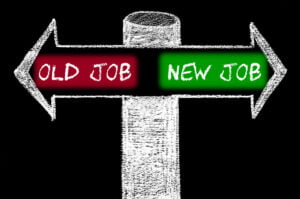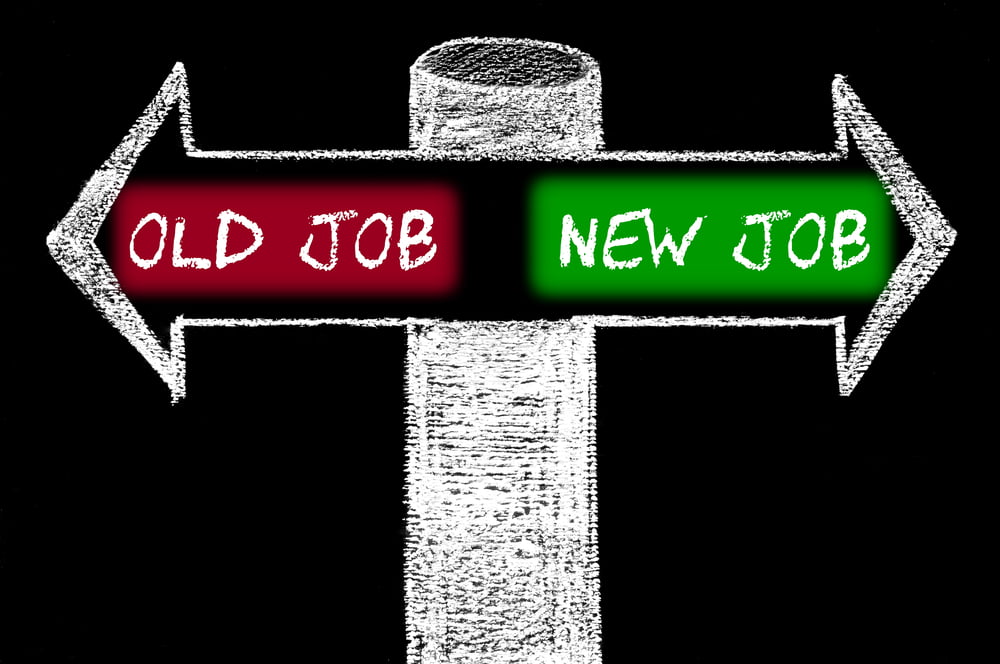
Navigating Your Old 401(k) Transfer: Essential Steps When Changing Jobs
By, Jeremy Reif, CRPS
One of the realities of working in today’s world is that many people will switch jobs. Not once, not twice, but multiple times. Employees in past generations often found a job and stuck with it for decades, or even until they retired. That is definitely not the case today. When it comes to job hopping, millennials often get a bad rap, but the numbers show that job-switching isn’t exclusive to younger generations. The Bureau of Labor Statistics reports that in their first 30-plus years of adulthood, young baby boomers averaged 11.9 different jobs.[1]
If you look back at your working years, you may see a similar trend. You may have had some jobs that were temporary, some that were seasonal, and some, of course, lasted long-term. Regardless of why you change jobs, switching to a new company or organization every few years means that you’ve probably accumulated a handful of retirement plans along the way, most likely in the form of a 401(k).
What do you do when you leave a job with a retirement plan? Do you have options for your 401(k)? The good news is that yes, you do.
What Are Your 401(k) Plan Options?
Keep in mind that when you leave a job, your 401(k) is your money! Employers often have different vesting schedules for their contributions, but if you’ve contributed to a 401(k), what you’ve invested has your name on it. Since you want your money to work for you in the most profitable way possible, here is a review of your 401(k) options when you leave a job.
1. Leave The Plan With Your Previous Employer
This is the simplest option because it doesn’t require you to do anything. However, it might not be an option for everyone. If your account holds less than $1,000, your employer is allowed to automatically cash out your account when you leave. If your account holds between $1,000 and $5,000, most companies will automatically roll your account into an IRA for you when you leave. Most of the time, employees need to have over $5,000 in their account to have the option of leaving it where it is. Check with your 401(k) provider or HR department to learn the specifics of your plan.
There are a few benefits to keeping your money with your previous employer, especially if the plan has appropriate investment options, low costs, or contains company stock. On the flip side, you may not have easy access to the account information once you’ve moved on and you will no longer be able to contribute to your plan or take a loan from it. You are also limited to the investment options the company offers, which may have higher fees or lower returns than you can find elsewhere. If you like having your money in a 401(k) but don’t like your old company’s plan, there is another option.
2. Move Your 401(k) Money Into Your New Employer’s Plan
Not all companies accept rollovers from other plans, so you will have to consult with your new plan administrator to see if this opportunity is available to you. People often choose this approach as a way to consolidate assets into one account instead of having multiple small retirement accounts lying around.
Most of the advantages of moving your money into your new employer’s plan are the same as keeping it in the old one, such as possible lower-cost investment options, and unique, plan-specific investment options (which vary by plan). The disadvantages to this approach are also the same as the previous option: you are limited in your investment options and subject to the plan rules, which may have certain transaction limits. If you aren’t happy with the investment options offered by the new plan, or the fees are too high, check out option #3.
3. Rollover Your 401(k) Into An IRA
If you want to combine all your 401(k) accounts into one account or if an IRA has lower fees and more investment choices, a rollover may be right for you. With a traditional IRA, you contribute pre-tax dollars and let that money grow tax-deferred over time. You’ll pay taxes on any pre-tax contributions and investment gains only when you withdraw the money, which you can do starting at age 59 ½. If you withdraw before then, you’ll likely have to pay a penalty.
There are many advantages to having your money in an IRA as opposed to a 401(k) plan. You have much more flexibility with the IRA. You can shop around for low fees and diverse investment options. Instead of being tied to the 20 or so options your company offers, you can invest your IRA in just about anything except life insurance or collectibles.
With all of your money in one place, it may be easier to see the big picture of where you stand financially and manage your asset mix. The IRS even allows you to withdraw earnings penalty-free from your IRA before you turn 59 ½, as long as your account has been open for five years and the money is used for qualified expenses, such as buying your first home, higher education, or medical expenses.
The Bottom Line
While you have options when it comes to your 401(k), you should be sure to consider what’s off-limits, too. For most people, that means not withdrawing the balance of your 401(k). Cashing out before age 59 ½ may lead to a 10 percent early withdrawal penalty. Plus, you’d be eating away at your retirement nest egg.
Whatever option you are thinking about, a financial professional will be able to walk you through the pros and cons of each choice and help you make the best decision for your future retirement.
[1] https://www.bls.gov/news.release/pdf/nlsoy.pdf

